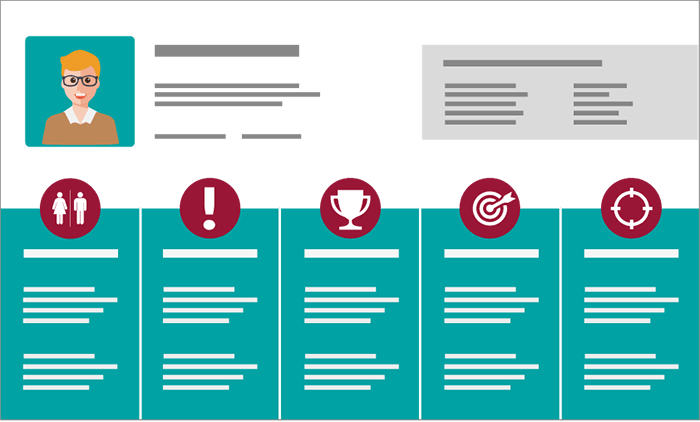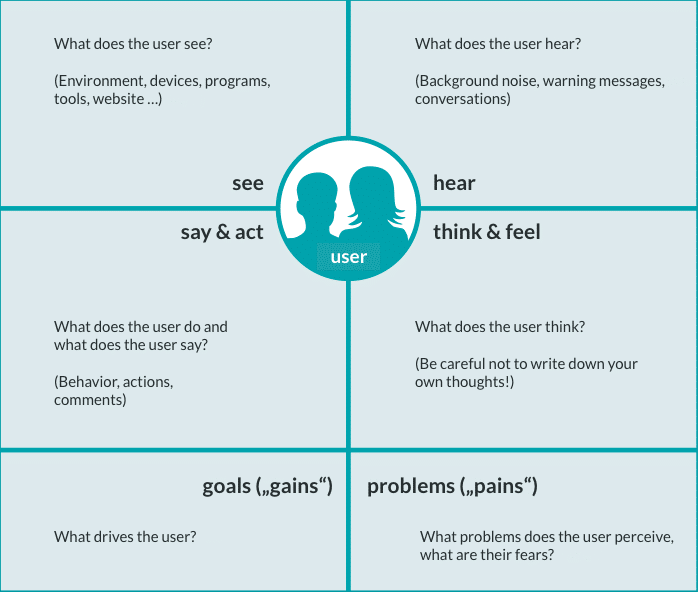Customer satisfaction vs. customer experience
Customer satisfaction is becoming more and more important. Nowadays, however, mostly under the name customer experience. It is still often confused with customer service.
And this is exactly where the problem lies: customer service is only a small part of the customer experience (CX). If you think that only the employees of one department are responsible for the customer, then the other employees don’t care about the customer. A big mistake. The CX is about the entire experience your customer has with your business.

Every customer has a customer experience with your company. But this experience can be good or less good. If the CX is good, then you have achieved what small grocery stores have already achieved: Happy customers and therefore customer satisfaction. But of course, there is much more to CX than just friendly employees. Otherwise there would be even more corner stores.
And that’s the secret: You have to know your customers exactly to know what makes good CX for them.
The companies that know this – and optimize CX accordingly – are the really successful companies. They have more and, above all, more loyal customers who are happy to recommend them to others. Often they are also willing to pay more.
That’s why more and more companies are focusing on the customer experience. The central question here is: How can I increase customer satisfaction?
What is Customer Experience Management?
Customer Experience Management is about improving the CX. You shape what the customer experiences with your company and how they relate to it.
From the first moment the customer becomes aware of you, through the decision phase, purchase, delivery, usage and finally to the re-purchase.
>> Video: 3 Customer Experience Touchpoints <<
As you can see, this is a very broad field and therefore many disciplines and departments are involved if you want to manage customer satisfaction. And you should.
Whatever your business model works: It is crucial whether your customers like to buy your products, whether they like to use your services. Whether they feel comfortable doing so. Whether they are satisfied. Whether they tell others about it. Whether they come back.
All this you try to achieve with CX Management.
Classic measures to increase customer satisfaction
Many possibilities to increase customer satisfaction are obvious. If you read through the list of my tips, you might think that there is nothing behind them. And that is actually the case. The only thing that is decisive:
Everyone in the company must take these points into account in everything they do in the company. Every single customer contact counts. Every decision has a more or less direct impact either on the product or on the customer.
The usual starting points are thus e.g:
- Motivated, qualified support & sales staff
- Sufficient time per customer & good payment
- Carry out customer surveys (personal, surveys on the website…)
- Analyzing customer conversations (call center recordings, consulting sessions …)
- Record & analyze customer requests (emails, support tickets, inquiries; social media, reviews…)
- Determine & evaluate customer-centric KPIs (i.e. establish key performance indicators/metrics to measure customer satisfaction)
- Perform user tests (usability tests, mystery shopping…)
- Derive improvements from the knowledge gained
- Establish tools for regular/continuous feedback
Do you know everything already? Have you already implemented everything?
Then you are better positioned than most companies in the world. And yet there are other, unconventional methods to increase the satisfaction of your customers:
8 untypical measures to increase customer satisfaction
In addition to the standard methods for improving the customer experience mentioned above, there are countless other methods – the more creative you get, the better. Here are a few tips and ideas for your own practice:
1) Become a customer yourself – buy from yourself
This is the measure I always recommend first. Because very often the most effective measures to improve the CX are the simplest:
- If your company manufactures products, think about who your ideal customer is. Try to put yourself in their perspective. Think about how your product will attract his attention. How he learns about you.
- Then follow exactly the way the ideal customer would go. Visit the website, for example. Find out more about the product there. Research the web to see if there are any good reviews. Order the product. Pay for it. Take it in receipt. Use it for the first time.
- So you go all the way once. No shortcuts, really all the way, including payment and delivery.
- You might even call support incognito.
Write down everything you notice during your entire customer journey. I bet there will be a lot of things on your list of improvement ideas at the end of this simple exercise.
This could be missing information on the website. Technical problems with payment processing. Confusing or missing e-mails. Ugly packaging. Unclear start-up. Or much, much more.
2) Customer observation as empathy training
You need to know the target group you want to sell your products to, clearly. But knowing is one thing. Really understanding is the other. If you say you know your customers, then this exercise is even more important. Because the same is true of your competitors, who also know your customers – and want to make them theirs.
You should know your customers better than others.
That’s why it is always worthwhile to spend time with customers. And that’s what all the members of your team should do regularly. Especially if they never deal directly with customers themselves. Take your boss, the product manager and a developer with you and let’s get started:
- Go together for an hour to where your customers are
If you sell products to end customers, it’s simple: You go to a store. This is also possible if you run an online store, because online customers also go to stores.
If you sell services to business customers, for example, it’s not quite as simple. You have to be creative. Attend a conference that these customers attend. Or a regulars’ table, a user meeting, a trade fair or a training event. - Collect data and information
The important thing is that you observe very well. It is not about bringing facts. You should understand the emotions of the people.
- What is driving you?
- Which concerns do they have?
- What are they complaining about, what do they praise?
As an ethnologist observes a tribe of natives of a previously unknown island, so you should observe your customers. Neutral, objective, curious.
You will see, this experiment will bring all participants a much deeper understanding for your customers.

3) Direct contact with unsatisfied customers
This tip is also about contacting your customers directly:
- Search for unhappy customers
Ask the support or sales department about a customer who has complained today. Or you look for someone who wrote a bad review or spoke badly about you on Twitter, Facebook or similar. - Contact an unhappy customer
Write or call this person. You will see: Practically always she reacts positively. Because everyone is happy about personal attention. And about taking him and his problems. - Collect information about dissatisfaction
Ask politely and get all the details. Very important: do not defend yourself. This will only get you into unproductive, time-consuming discussions. Apologize once at the beginning and then explain to your counterpart that you don’t want this to happen again. That you want to become better as a company. And that he or she is exactly the right person to help you achieve this.
This exercise is not about convincing the dissatisfied customer. Quite the opposite, because it may backfire. If the person you’re talking to feels that you’re just trying to sell him something, he’ll probably get angry.
The point of this exercise is to better understand why exactly the customer is not satisfied. Even if he has made it clear, there are still other backgrounds that you can learn from the customer.
At the end of such a conversation the customer feels better and so do you. And most importantly: You have learned something about your customers again, which helps you to create a better customer satisfaction in your company.
4) Question all beliefs
The next exercise takes a bit of courage, at least if you do it consistently and don’t give your colleagues a heads up.
Go into the next meeting and ask one question at a time:
“Why?”
This can be a real pain in the butt for the others. But if they go for it, it’s a great method.
Because usually we have fixed beliefs and ways of doing things, and that’s a good thing. It’s the only way we can really be productive and get things done. But from time to time, it’s very healing to challenge those things. Because situations change. Your products and services change:
- The needs and requirements of the customers.
- The competitive environment.
- The price structure.
- The technical conditions at the customers’ premises.
- The technical possibilities at your company or on the platform you use.
After this exercise, your colleagues might think you are a bit strange. But you will see: For many of them, questions like these set thought processes in motion. And they help you to come up with new ideas and find places where you can further optimize the CX.
If you like, try it out for yourself in the next meeting:
Write down each statement on a pad and write “why? Try to answer each question for yourself. You can see how powerful this method is.
5) Use mapping methods
Visualization always helps because that’s how our brain works. That’s why mapping methods are so valuable. There are quite a few of them, starting from simple organizational charts to service blueprints to UML diagrams for programming.
My personal recommendations of maps for improving CX are: Personas, Empathy Maps and Customer Journey Maps.
Personas
If you wonder why I bring personas as a mapping method: A good persona is a visual document, usually a poster in DIN-A3 format or even bigger. Clearly there is text on it. But small diagrams, charts and illustrative photos make the content easier to digest.
And, most importantly, they make sure that you as a team remember the personas better. And that you can put yourself in their shoes more easily.

Empathy Maps
A small shortcut are Empathy Maps. These are not so well known yet, but are especially useful if you don’t want to take the time to develop real personas. You define a mini-persona for the empathy map and write down what it
- sees
- hears
- says
- feels
Also include:
- Goals (gains)
- Problems (pains)

You can easily create such an empathy map in a team in two hours. This will give everyone involved a clear idea of what is useful for your customers – and, almost as importantly, everyone will have the same idea about it.
Customer Journey Map
Last mapping method, and certainly the most time-consuming to create: The Customer Journey Map. On it, you map the entire journey of a customer – from the moment they have a problem they need to solve, through the first contact with your company, the purchase – all the way to years of use.
Each of these methods takes time, but it helps tremendously to understand your customers better and identify ways to improve their experience to make them happy. And they help you to come to an agreement within the team and get a unified view of “the customer”.
6) Make someone’s life easier
For decades we have heard in marketing that we have to inspire customers. This is a noble goal, but sometimes it gets on your nerves. Not only to you, but also to the customers. Because you don’t always want to be inspired.
If I want to send a large file, I don’t need anything that will excite me. I need something that makes this task as easy as possible. Think about it: When was the last time you were excited about a handkerchief?
That’s why this approach is not so wrong: Think about how you can design your product to make the customers’ lives easier, not how you can inspire them. This might lead you to some very innovative approaches.
7) Surprise someone
The next approach takes another half step back: think about how you can surprise your customers. This again goes a bit in the direction of enthusiasm, but not quite. For example, it’s also surprising when you try an application and it works super easy, you immediately understand how it works and what it brings you.
In the case of sending files, you probably won’t be thrilled by it. But you’ll be surprised that it can be as simple as that. But this approach is not at all limited to simplicity or even to digital applications.
You can surprise customers with anything they don’t expect. A birthday greeting. Or a free download. A personal phone call. Anything is possible. You can just start with a list and write down what unexpected gifts you can think of – and remember, they don’t always have to be material.

8) Identify key persons
Do you know who in the company is most important to the customers? It is practically never the CEO, board of directors or managing director. It is often the sales employee. Sometimes it’s a colleague from support. Or someone from marketing who is in charge of social media.
Put yourself in the customers’ shoes and forget the organization chart. Identify these people and help them to get more empathy for the customers.
For example, by doing one of the exercises described above, such as creating an empathy map or a customer journey with them. Or by spending an hour together observing customers and collecting information.
In the process, the person learns something about the customers. Most importantly, you will also learn a lot from this person about what they know about the customers.
Conclusion: Those who manage the customer experience strengthen their competitiveness in the long term
A good customer experience distinguishes top companies from the average. Only those who know their customers and can respond to their wishes and needs will be successful on the market in the long term.
The market is extremely transparent these days, and negative experiences spread faster than you’d like through social media.
Disruption happens when a company manages to provide customers with such a good experience that they leave the incumbents – or that they enthusiastically embrace something they didn’t even know they needed.
Be at the forefront and try out one of these unconventional methods at your company.
More about Customer Satisfaction
- 8 methods for analyzing customer satisfaction
- How to prioritize customer satisfaction measures
- Everything you need to know about customer satisfaction
- Proving customer satisfaction with key performance indicators
- 8 reasons why increasing customer satisfaction doesn’t work!
- How you can measure the level of customer satisfaction
- Customer Satisfaction and Customer Loyalty: correlation and differences
- Example structure of a customer satisfaction survey: structure for valuable insights
- Customer Satisfaction and Customer Retention: success factors for sustainable growth
- The most common questions in the area of customer satisfaction




